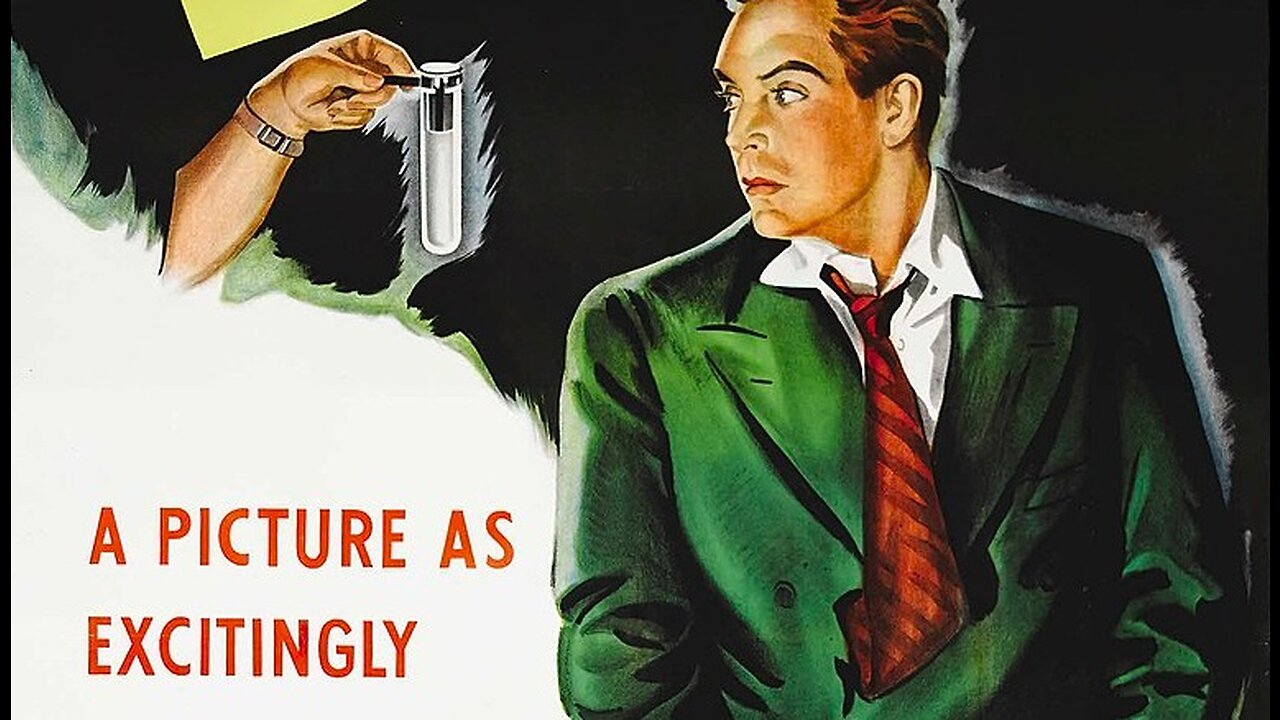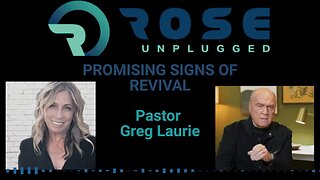Premium Only Content

"A taut and thrilling mystery that keeps you guessing until the very end" - D.O.A. (1950)
"DOA" is a 1950 film noir directed by Rudolph Maté. The film tells the story of Frank Bigelow (played by Edmond O'Brien), a small-town accountant who arrives in San Francisco for a business trip. However, upon arrival, he discovers that he has been poisoned and has only a few days to live. In a race against time, Bigelow tries to track down his killer and unravel the mystery behind his poisoning.
The film is notable for its innovative use of flashback storytelling, with the narrative frequently jumping back and forth in time to reveal new information about the case. The black-and-white cinematography also helps create a moody and atmospheric tone that is typical of film noir.
As Bigelow delves deeper into the mystery, he encounters a range of shady characters, including a nightclub singer named Paula (played by Pamela Britton) and a gangster named Majak (played by Luther Adler). The film builds towards a tense and suspenseful conclusion as Bigelow's time runs out and he races against the clock to find his killer.
Overall, "DOA" is a classic example of the film noir genre, featuring all the hallmarks of the style, including a cynical protagonist, a complex plot, and a sense of fatalism and doom.
"A hard-hitting noir classic with an innovative structure that keeps you on the edge of your seat until the very end." - Rotten Tomatoes
"DOA is a gripping and suspenseful film that showcases the best of the film noir genre." - Roger Ebert
"Edmond O'Brien delivers a powerhouse performance as the doomed protagonist, and the film's use of flashback storytelling is a masterclass in building tension." - The Guardian
"A moody and atmospheric film that captures the dark underbelly of San Francisco in the 1950s." - Empire Magazine
"DOA is a taut and thrilling mystery that keeps you guessing until the very end." - Variety
D.O.A. is a 1950 American film noir directed by Rudolph Maté, starring Edmond O'Brien and Pamela Britton. It is considered a classic of the genre. A fatally poisoned man tries to find out who has poisoned him and why. It was the film debuts of Beverly Garland (as Beverly Campbell) and Laurette Luez.
Leo C. Popkin produced D.O.A. for his short-lived Cardinal Pictures. Due to a filing error, the copyright to the film was not renewed on time,[1] causing it to fall into the public domain: it was subsequently remade as Color Me Dead (1969), D.O.A. (1988), and Dead On Arrival (2017).
Plot
An opening sequence features Frank Bigelow walking through the long hallway of a police station to report his own murder. From here to the end, the story is told in flashback. Bigelow is a hard-driving accountant and notary public in Banning, California, who decides to escape for a fun vacation in San Francisco. At the hotel, he is invited to join a group of conventioneers for a night out. He ends up at a nightclub, where unnoticed, a stranger swaps his drink for another one. The next morning, he feels extremely ill. Doctors determine that he had ingested poison, a "luminous toxin", for which no antidote is known.
With only days to live, Bigelow embarks on a desperate search to discover the motive for his poisoning. A call to his secretary Paula provides a possible lead; a Eugene Philips has been urgently trying to contact him. Bigelow travels to Philips' import-export company, meeting Halliday, the company comptroller, who says that Philips has committed suicide.
Bigelow locates Eugene Philips' widow and brother Stanley Philips. Months earlier, Eugene had purchased iridium, a rare, platinum-like metal, which had been stolen by a criminal named Majak. The seller was a George Reynolds (or Raymond Rakubian), Majak's nephew. As a result of this illegal sale/purchase transaction, Eugene Philips faced criminal charges.
The bill of sale would have cleared Eugene, but has gone missing, and that document had been notarized by Bigelow himself. He learns that Reynolds/Rakubian is now dead. He realizes that someone seems intent on eliminating all evidence of this sale.
That someone turns out, in a plot twist, to be Halliday. Stanley Phillips, who has now been poisoned, reveals that Eugene discovered that his wife and Halliday were having an affair. Mrs. Philips affirms that during a confrontation that turned violent, Halliday threw Eugene over a balcony. To make it look like suicide, the pair insisted that Eugene had killed himself over his legal troubles. When they discovered that exonerating evidence of his innocence existed in the notarized iridium bill of sale, Halliday began disposing of anyone knowing about the document, and that led to Bigelow.
In the final scene, Bigelow tracks Halliday to the Philips company and finds him wearing the same distinctive coat and scarf as the man who switched the drinks. Halliday draws a gun and fires first, but Bigelow fatally shoots him.
Bigelow finishes telling his story and dies. The police detective taking down the report instructs that his file be marked "dead on arrival".
Cast
Marla Rakubian threatens Bigelow when he comes to her for information.
Edmond O'Brien in DOA crop.jpg Edmond O'Brien as Frank Bigelow Pamela Britton in DOA 1.jpg Pamela Britton as Paula Gibson
Luther Adler in DOA.jpg Luther Adler as Majak Lynn Baggett in DOA.jpg Lynne Baggett as Mrs. Phillips
William Ching in DOA.jpg William Ching as Halliday Henry Hart in DOA.jpg Henry Hart as Stanley Phillips
Beverly Garland in DOA.jpg Beverly Garland (credited Beverly Campbell) as Miss Foster Neville Brand in DOA cropped.jpg Neville Brand as Chester
Laurette Luez in DOA 2.jpg Laurette Luez as Marla Rakubian Virginia Lee in DOA.jpg Virginia Lee as Jeannie
Additional cast members:
Jess Kirkpatrick as Sam
Cay Forrester as Sue
Frank Jaquet as Dr. Matson
Lawrence Dobkin as Dr. Schaefer
Frank Gerstle as Dr. MacDonald
Carol Hughes as Kitty
Frank Cady as Eddie the bartender in Banning (uncredited)
Michael Ross as Dave the bartender in San Francisco
Donna Sanborn as the nurse
Reception
Alternate theatrical release poster
Critical reception
On Rotten Tomatoes the film has an approval rating of 88% based on reviews from 25 critics.[2]
The New York Times, in its May 1950 review, described it as a "fairly obvious and plodding recital, involving crime, passion, stolen iridium, gangland beatings and one man's innocent bewilderment upon being caught up in a web of circumstance that marks him for death". O'Brien's performance had a "good deal of drive", while Britton adds a "pleasant touch of blonde attractiveness".[3]
In 1981 Foster Hirsch carried on a trend of more positive reviews, calling Bigelow's search for his own killer noir irony at its blackest. He wrote, "One of the film's many ironies is that his last desperate search involves him in his life more forcefully than he has ever been before... Tracking down his killer just before he dies — discovering the reason for his death — turns out to be the triumph of his life."[4] Critic A. K. Rode notes Rudolph Maté's technical background, writing:
D.O.A. reflects the photographic roots of director Rudolph Maté. He compiled an impressive resume as a cinematographer in Hollywood from 1935 (Dante's Inferno, Stella Dallas, The Adventures of Marco Polo, Foreign Correspondent, Pride of the Yankees, and Gilda, among others) until turning to directing in 1947. The lighting, locations, and atmosphere of brooding darkness were captured expertly by Mate and director of photography Ernest Lazlo.[5]
David Wood of the BBC described the opening as "perhaps one of cinema's most innovative opening sequences."[6] Michael Sragow, in a Salon web review (2000) of a DVD release of the film, characterized it as a "high-concept movie before its time."[7] Leonard Maltin's Movie Guide (2008) gave D.O.A. 3½ stars (out of 4).[citation needed]
Accolades
In 2004, D.O.A. was selected for preservation in the United States National Film Registry by the Library of Congress as being "culturally, historically, or aesthetically significant."[8][9]
The film was nominated for two American Film Institute lists:
2001: AFI's 100 Years...100 Thrills[10]
2008: AFI's 10 Top 10 mystery[11]
Production
The shot of Edmond O'Brien running down Market Street (between 4th and 6th Streets) in San Francisco was a "stolen shot," taken without city permits, with some pedestrians visibly confused as O'Brien bumps into them. D.O.A. producer Harry Popkin owned the Million Dollar Theater at the southwest corner of Broadway and Third Street in downtown Los Angeles, directly across the street from the Bradbury Building at 304 South Broadway, where O'Brien's character confronted his murderer. Director Rudolph Maté liberally used Broadway and the Bradbury Building during location shooting and included the Million Dollar Theater's blazing marquee in the background. The theater would later serve the same function when Ridley Scott filmed Blade Runner at the Bradbury Building.
After "The End" and before the listing of the cast, a credit states the medical aspects of this film are based on scientific fact, and that "luminous toxin is a descriptive term for an actual poison."
The bop jazz band playing at the Fisherman's Club while O'Brien's glass is being spiked was filmed on a Los Angeles soundstage after principal photography was completed. According to Jim Dawson in his 1995 book Nervous Man Nervous: Big Jay McNeely and the Rise of the Honking Tenor Sax, the sweating tenor saxophone player was James Streeter, also known as James Von Streeter. Other band members were Shifty Henry (bass), Al "Cake" Wichard (drums), Ray LaRue (piano), and Teddy Buckner (trumpet). However, rather than use the live performance, the music director went back and rerecorded the soundtrack with a big band, not a quintet as seen in the film, led by saxophonist Maxwell Davis.[12] Film score was composed by Dimitri Tiomkin.[13]
Remakes and influence
The March 16, 1951, radio episode of The Adventures of Sam Spade features a victim reporting his own murder at police headquarters.[14] D.O.A. was dramatized as an hour-long radio play on the June 21, 1951, broadcast of Screen Director's Playhouse, starring Edmond O'Brien in his original role.
The film has been remade four times:
In Australia in 1969 as Color Me Dead, directed by Eddie Davis. Because copyright had lapsed, Color Me Dead was basically an exact copy of D.O.A.[15]
In 1988, a new version was released as D.O.A., directed by Annabel Jankel and Rocky Morton, with Dennis Quaid as the protagonist.[15]
In 2006, a modernised action thriller version was released as Crank
In 2017, a new version was released as Dead On Arrival.[15][16]
In 2011, the Overtime Theater staged a world-premiere musical based on the classic film noir. D.O.A. a Noir Musical was written and adapted by Jon Gillespie and Matthew Byron Cassi, directed by Cassi, with original jazz and blues music composed by Jaime Ramirez and lyrics by Ramirez and Gillespie. The new musical played to sold-out audiences during its five-week run, and received two ATAC Globe Awards in 2012 for "Best Adapted Script" and "Best Original Score."[17]
-
 13:54
13:54
The Film Archives
1 year agoOld Hollywood Bloopers (1942)
618 -
 1:57:07
1:57:07
The Charlie Kirk Show
3 hours agoAfter Hegseth, RFK + The Fall of Trudeau? + Trannies On Teams | Sen. Scott, Lewandowski, Frei
110K26 -
 1:03:02
1:03:02
Russell Brand
4 hours agoDrones Over New Jersey: Why Is the Government Being So Quiet? - SF515
118K280 -
 49:28
49:28
Ben Shapiro
2 hours agoEp. 2106 - TRUMP’S WORLD: Trudeau to RESIGN?! Germany Moves RIGHT?!
50.1K28 -
 LIVE
LIVE
hambinooo
5 hours agoBRAND NEW AWESOME FPS GAME
167 watching -
 3:59:22
3:59:22
SoundBoardLord
5 hours agoROAD TO 350!!! MARVEL RIVALS & ZOMBIES w/ Friends!
27.3K1 -
 12:54
12:54
BlackDiamondGunsandGear
5 hours ago $0.34 earnedSpringfield Echelon: Game-Changer or Gimmick?
11.9K3 -
 17:10
17:10
ROSE UNPLUGGED
20 hours agoPromising Signs of Revival
13.3K2 -
 2:53:19
2:53:19
The Dana Show with Dana Loesch
3 hours agoNEW DETAILS EMERGE IN WISCONSIN SCHOOL SHOOTING | The Dana Show LIVE On Rumble!
31.5K1 -
 31:00
31:00
Grant Stinchfield
3 hours ago $4.51 earnedExposed: COVID Shots Loaded with Contaminated DNA
19.9K6